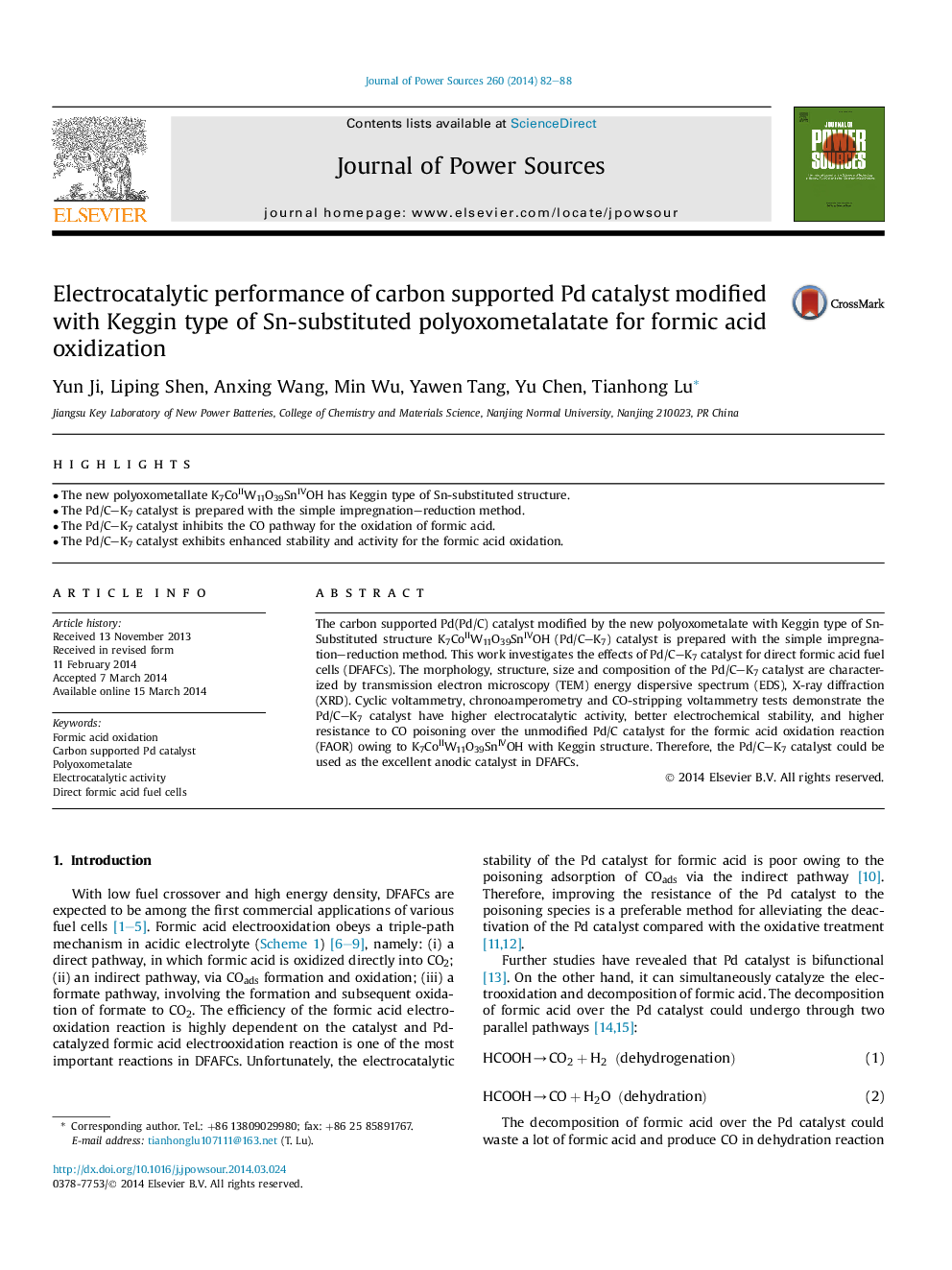| Article ID | Journal | Published Year | Pages | File Type |
|---|---|---|---|---|
| 1284132 | Journal of Power Sources | 2014 | 7 Pages |
•The new polyoxometallate K7CoIIW11O39SnIVOH has Keggin type of Sn-substituted structure.•The Pd/C–K7 catalyst is prepared with the simple impregnation–reduction method.•The Pd/C–K7 catalyst inhibits the CO pathway for the oxidation of formic acid.•The Pd/C–K7 catalyst exhibits enhanced stability and activity for the formic acid oxidation.
The carbon supported Pd(Pd/C) catalyst modified by the new polyoxometalate with Keggin type of Sn-Substituted structure K7CoIIW11O39SnIVOH (Pd/C–K7) catalyst is prepared with the simple impregnation–reduction method. This work investigates the effects of Pd/C–K7 catalyst for direct formic acid fuel cells (DFAFCs). The morphology, structure, size and composition of the Pd/C–K7 catalyst are characterized by transmission electron microscopy (TEM) energy dispersive spectrum (EDS), X-ray diffraction (XRD). Cyclic voltammetry, chronoamperometry and CO-stripping voltammetry tests demonstrate the Pd/C–K7 catalyst have higher electrocatalytic activity, better electrochemical stability, and higher resistance to CO poisoning over the unmodified Pd/C catalyst for the formic acid oxidation reaction (FAOR) owing to K7CoIIW11O39SnIVOH with Keggin structure. Therefore, the Pd/C–K7 catalyst could be used as the excellent anodic catalyst in DFAFCs.
